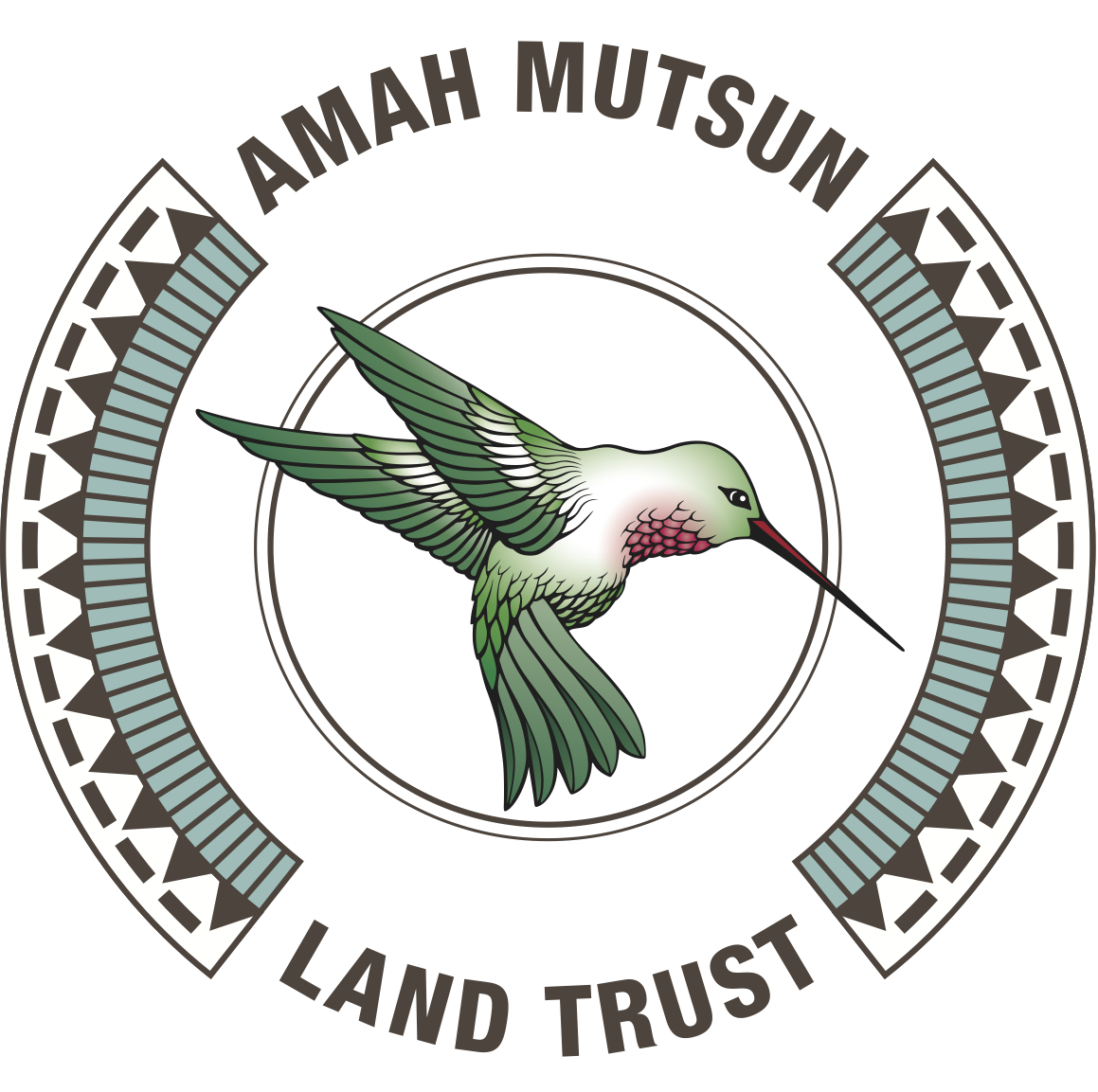Summer 2019 Newsletter
UPDATE ON CULTURAL RESOURCE SURVEY AT COTONI-COAST DAIRIES
By Rob Cuthrell, AMLT Research Associate
Rob Cuthrell (left) leading NSC interns in archeology field work at CCD
The Cotoni-Coast Dairies property, owned by the Bureau of Land Management (BLM), comprises 5800 acres of ranchlands, shrublands, and creeks around the town of Davenport. The property extends from Highway 1 up into the forests of the Santa Cruz Mountains. In early 2017, a proclamation by President Obama designated this and a few other properties as part of the California Coastal National Monument in order to “preserve their cultural, prehistoric, and historic legacy and maintain their diverse array of natural and scientific resources, ensuring that the historic and scientific value of these areas … remain for the benefit of all Americans.” The “Cotoni” (pronounced Cho-toe-nee) were the historic tribe of indigenous people who lived in this area, while “Coast Dairies” refers to Euro-American use of the property during the late 1800s and early 1900s.
In 2016, Amah Mutsun Land Trust signed a Memorandum of Understanding with the BLM Central Coast Field Office that described how the two organizations will work together to steward cultural and natural resources, as well as to educate members of the public about indigenous history at Cotoni-Coast Dairies. In 2018, BLM began working on an amendment to the California Coastal National Monument Resource Management Plan (RMP) in order to guide management of the Cotoni-Coast Dairies property over the long term. Through the RMP Amendment development process, BLM will evaluate how best to balance public use of the property with protection of natural and cultural resources.
Native Stewards Steven Pratt (left) and Marcella Luna (right) serve as research assistants on the CCD survey project
Driven by a deep concern for the protection of cultural and natural resources in the traditional territory of Amah Mutsun Tribal Band, AMLT has taken an active role to identify and protect sensitive resources at Cotoni-Coast Dairies since 2016. Working in partnership with ecologists and archaeologists, AMLT’s Native Stewardship Corps has conducted surveys to identify and describe the condition of previously undocumented resources on the property, such as culturally important native plants and archaeological sites. This year, with generous support from a grant made through the Bay Area Conservation Small Grants Program of Resources Legacy Fund, which is funded in part by the Gordon and Betty Moore Foundation, plus a grant from the Conservation Lands Foundation, AMLT has carried out six weeks of survey work, with three more weeks planned for August and September. Surveys have focused on portions of the property under consideration for public access.
NSC interns utilizing sifters in archeology work at CCD to search for artifacts
AMLT’s survey work at Cotoni-Coast Dairies this year has contributed substantially to our understanding of Native inhabitation of the property, more than doubling the number of recorded indigenous archaeological sites. AMLT is working closely with BLM to ensure that information about the locations of sensitive cultural resources is incorporated into the management planning process as early as possible so that BLM can implement effective means to protect these sacred sites.
In addition to new information about archaeological sites, AMLT has also learned more about culturally significant plant resources on the landscape. For example, we now know that Cotoni-Coast Dairies hosts several healthy patches of native geophytes, or plants that store carbohydrates in underground organs such as bulbs and corms. These “Indian potatoes,” including blue dicks, brodiaeas, and triteleias, are important traditional foods for indigenous people throughout central California.
Golden Brodiaea (Triteleia ixioides) at CCD site. Photo curtesy of Rob Cuthrell
As part of the RMP scoping process, BLM invited public comments regarding issues of concern related to management of Cotoni-Coast Dairies. AMLT submitted a detailed set of comments that addressed concerns regarding stewardship of threatened native biota and vegetation types, management of exotic invasive plants, protection of cultural resources, issues related to public access, illegal camping and dumping, and others. AMLT’s comments also encouraged active approaches to land stewardship and the development of educational and interpretive materials for future visitors to Cotoni-Coast Dairies. AMLT’s full scoping comment can be viewed here (Note to readers: Portions of AMLT’s scoping comment containing confidential information have been removed).
"The views and conclusions contained in this document are those of the authors and should not be interpreted as representing the opinions or policies of the U.S. Government. Mention of trade names or commercial products does not constitute their endorsement by the U.S. Government."




